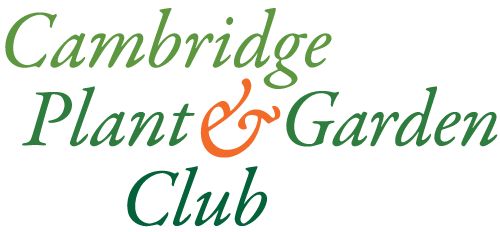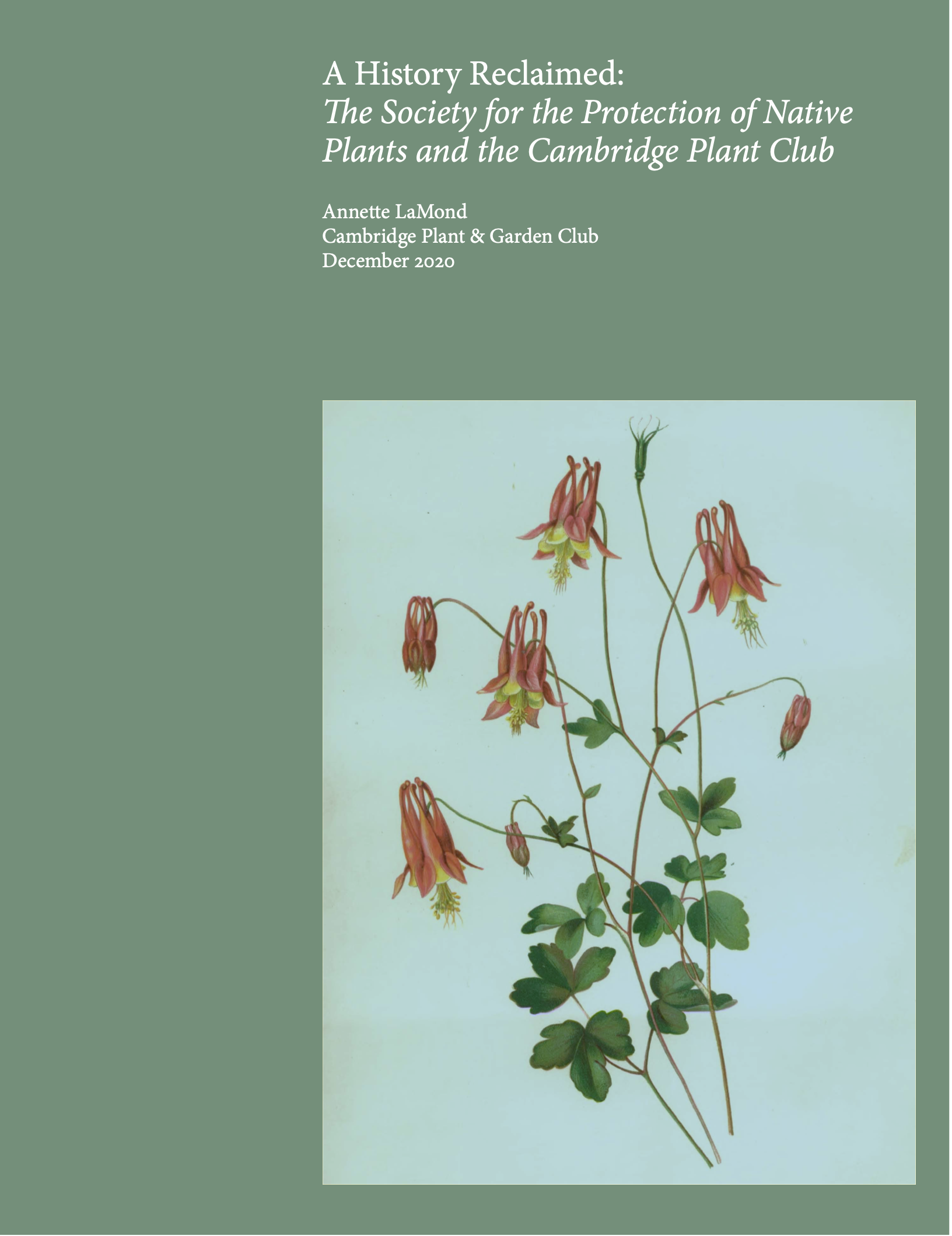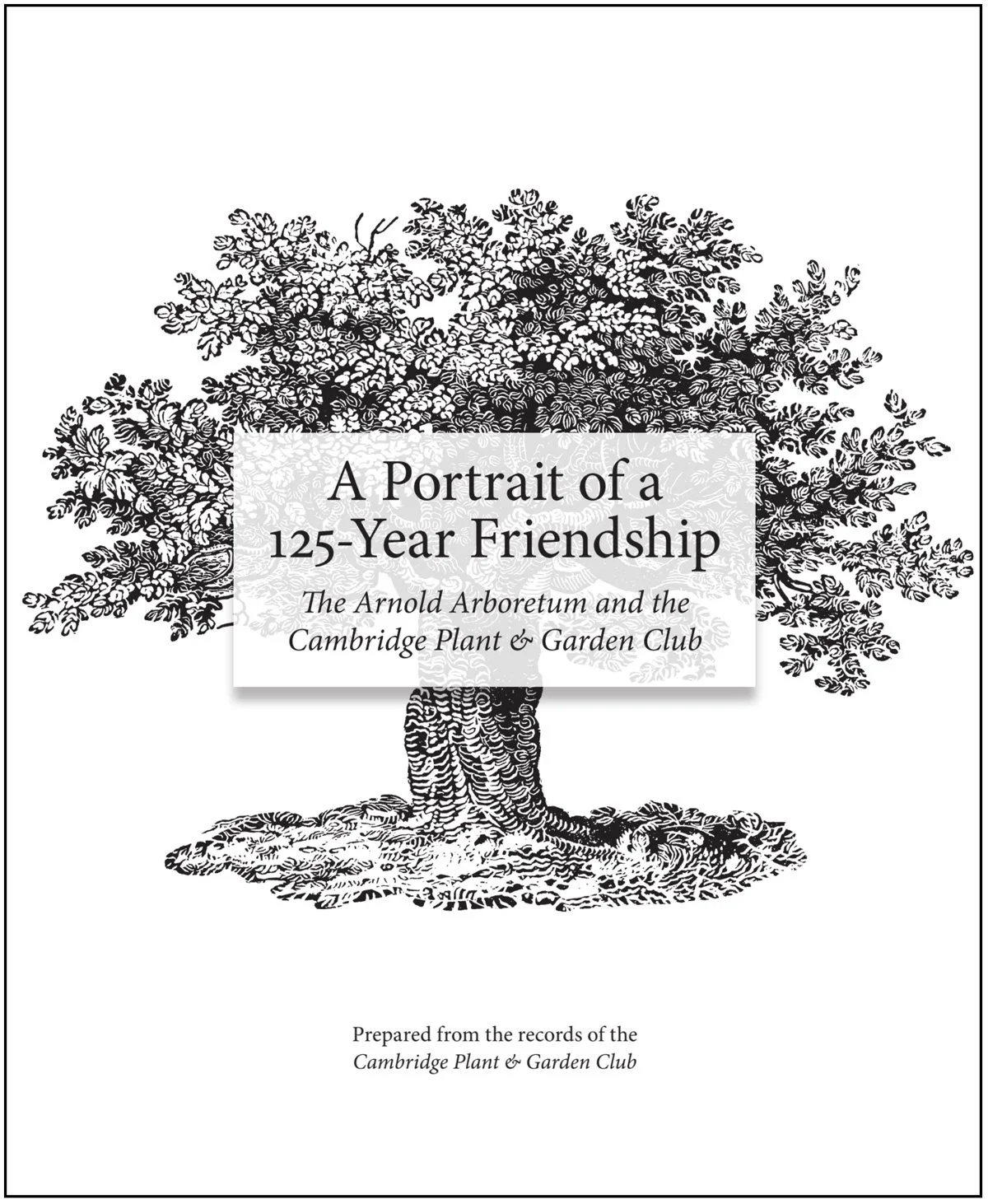CP&GC Publications
Discover Cambridge Pocket Parks
Discover Cambridge Pocket Parks is a publication of the Cambridge Plant & Garden Club in cooperation with the City of Cambridge. For the first time 21 small “pocket parks” scattered through the City of Cambridge are identified and celebrated. Defined simply as under-an-acre open spaces with trees, plantings, and a place to sit, their primary purpose is respite and repose, rather than recreation. Cambridge pocket parks are small green oases in our City’s urban landscape.
Discover Cambridge Pocket Parks briefly traces the history of pocket parks, from 19th century London to Paley Park in Manhattan; in Cambridge, Hastings Park and Winthrop Square Park date to before the Revolution; the most recent is Triangle Park, completed this year. The booklet provides a map of where the parks are located and brief descriptions of each of them. We close with recommendations that the City invest in the maintenance of existing small parks, and that creating new ones, particularly in neighborhoods like Central Square, become a priority of Cambridge open space planning.
For the first time the City of Cambridge has identified pocket parks on its Community Development Department’s Open Space Map Gallery and Park Information Page. And now, with thanks to the Cambridge Public Library, the book is available to loan. You can reserve a copy here.
We are deeply grateful to the City of Cambridge- Discover Cambridge Pocket Parks is a truly combined effort; however, the contents of the booklet are entirely the responsibility of the Club’s Pocket Park Committee and any errors are our own. You can also read the CPL’s Cambridge Room blog here.
Click here to download a PDF of the book. To view the book below at full screen, just click the small square-shaped icon found in bottom right corner on the playback panel:
A History Reclaimed: CP&GC and Native Plant Trust
Members of the Cambridge Plant Club developed an interest in the conservation wild flowers in the 1890s, and became subscribers of the Society for the Protection of Native Plants soon after its founding in 1901. The paper gives a history of this early conservation organization, and its subsequent transformation into the Native Plant Trust. The paper also gives new recognition to the roles of the Massachusetts Horticultural Society and The Garden Club of America in supporting the protection of native plants. Together, the two organizations encouraged a succession of ardent gardeners, including our club’s members, to dedicate their volunteer energy to the New England Wild Flower Society, paving the way for today’s vibrant Native Plant Trust. Read a PDF of the essay here.
Index to Plant Club Speakers, 1889–1965
Annette LaMond
This index of Plant Club speakers includes many names that are still known today, at least in their fields or by local historians. Quite a few were Harvard professors; one of the first to address the club was the Arnold Arboretum’s Charles Sprague Sargent. Notably, some of the professors specialized in other fields, such as classics and archeology, but were formidable botanists and horticulturists nonetheless. Among the landscape designers who spoke to the club were Mabel Babcock; Paul Frost; Warren Manning (who also provided advice on civic projects); and Fletcher Steele. (Babcock and Steele designed gardens for several club members.) Well-known botanists include Alice Eastwood; Margaret Clay Ferguson; Merritt L. Fernald; George L. Goodale; Paul C. Mangelsdorf; and Benjamin L. Robinson. Plantswomen and plantsmen who shared their knowledge include Mrs. Hugh Hencken (before she became television personality Thalassa Cruso); John George Jack; Kathryn Taylor; Helen Noyes Webster (better known as Mrs. Hollis Webster); and Donald Wyman. Quite a few speakers were conservationists. Although their names may no longer be familiar, they played lead roles in saving thousands of acres that are now beloved sanctuaries. Among them: Annette Cottrell; Walter Deane; Kay Kulmala; Winthrop Packard; and Theodore Lyman Storer. Other speakers – Emma G. Cummings; Kaneji Demoto; Robert T. Jackson; Edith H. Scamman – defy categorization and should also be better known. This is also true of member speakers. It is my hope that the history of the Plant Club, viewed through its programs, will give new recognition to all the speakers in this index.
Cambridge Community Gardens Today
2020-21 Cambridge Community Gardens Today, a publication of the Cambridge Plant & Garden Club, shines a light on each of 14 Cambridge Community Gardens operating today across the City. In addition to a brief introduction and conclusion, four pages are dedicated to each garden, including a short history, an overview of what is grown, a sketch of the gardeners, and how the garden is managed. Multiple photographs include a drone shot showing each garden in its neighborhood location.
The project’s committee is deeply indebted to Cambridge Community Garden coordinator Jennifer Letourneau for her support and enthusiasm. We are very grateful to the garden coordinators and gardeners who opened their gardens to us and shared their stories. However, the Cambridge Plant & Garden Club is fully responsible for the content of this publication: errors, observations and opinions are solely our own.
Click here to download a PDF of the book. To view the book below at fullscreen, just click the small square-shaped icon found in bottom right corner on the playback panel:
A Portrait of a 125-Year Friendship:The Arnold Arboretum and the Cambridge Plant and Garden Club
A History in One Thousand Programs
(More or Less):
The Cambridge Plant Club, 1889–1965
Read about the Cambridge of the 1880s and the women who came together in the unseasonably warm winter of 1889 to found a garden club. The moniker “Garden Club” was not yet a term of art (or obvious choice), so they debated and settled on a simple name – Plant Club – which expressed their shared interest in growing plants well, indoors and out. This essay describes how members of the club were continually inspired and re-energized by expert speakers, including from their own ranks, and how over the years, a passion for gardening turned into advocacy for conservation and civic planting in Cambridge and beyond.
Plant Club record book, Volume I, page 1. Originally the Floricultural Society, the simpler Plant Club moniker was adopted at the club’s second meeting on February 11, 1889. (click to enlarge)
Sixty Years of Gardening at the Hooper-Lee-Nichols House
The Hooper-Lee-Nichols House was donated to the Cambridge Historical Society in 1957. After settling into the house, the Society reached out to the then separate Cambridge Garden Club (founded 1938) and Cambridge Plant Club (founded 1889) about the care of the grounds. The Garden Club, which was considering a project to celebrate its upcoming 25th anniversary, accepted the invitation as a major project.
Thanks to a 1920s renovation, the HLN garden had good bones. Garden Club members set to pruning existing plant material (including the crabapple trees that still grace the entrance). Out of this hands-on work came a collaborative design for a colonial-era estate in miniature. Features: yew hedges, lawns, roses, herb garden within a boxwood circle on the west of the house, and orchard to the east. To realize the plan, members propagated boxwood and yews. The club’s horticulturists accomplished a great deal on a surprisingly small budget.
At the project’s five-year mark, the club planted a little-leaf linden at the south- east corner, still a feature, and a fringe tree, which is not. The yews, which had grown vigorously, were spaced out to extend the hedge that endures as a sig- nature of the garden. Also honoring the club’s early work – an armillary sundial for the center of the boxwood circle – was donated by a club member after it made an appearance in a Massachusetts Horticultural Society spring flower show.
In 1966, the Garden Club merged with the Plant Club. After the merger, other major projects competed for members’ attention. Landscape restoration at Fresh Pond Reservation was one. Another was the Longfellow House garden, then in shabby condition (it had not yet been conveyed to the National Park Service). A club committee continued to tend the grounds at Hooper-Lee-Nichols, but it was a low-key effort for the next two decades.
In 1987, CP&GC re-engaged with the maintenance and design of the garden. Members re-dug the front perennial beds, expanding and adding plantings. Thus began regular club spring and
fall work days, featuring raking, bulb planting, pruning, deadheading, and of course, weeding. In recognition of the club’s renewed commitment, Capizzi& Company pruned all the trees and shrubs on the grounds pro bono. Capizzi’s crews still hand-clip the yew hedges each year.
The boxwood circle on the west side of the house began to decline in the 1980s, and by the mid-1990s, the circle became a half-circle. In 2003, the struggling survivors were removed when the club won a grant from the Garden Club Federation of Massachusetts to replant the boxwood garden. Unfortunately, the new plants suffered during the severe winter of 2003–04. The next year, they were replaced by boxwood salvaged from the Longfellow House garden which was under renovation. Sadly, these boxwood plants also declined, and were recently removed. The area awaits a new planting plan.
In 2010, the club committed to restore the garden’s front gate – a Colonial Revival feature (ca. 1916) that had fallen into deteriorated condition. A club member who is an architect volunteered to prepare drawings, and more than $10,000 was raised to rebuild the gate with new lighting and modifications to the entry’s steps.
Also in 2010, club members refocused on the east side of the house, where the orchard had been shaded out – an effort that involved adding edging, removing scrubby plants (including two of the last three fruit trees dating to 1963) and planting new perennials. At the same time, CP&GC planted a pair of pink-flowering dogwoods in front of the east yew hedge.
In 2011, the club received another grant from the Garden Club Federation for the restoration of the grape trellis on the east side of the house. One of the contractors, Rocco Ricci whose own Cushing Street garden has been on the CPL Secret Gardens tour, donated his grapevine-pruning expertise after the trellis was rebuilt. In recognition of the grant, Hartney Greymont contributed a pruning of all the major trees on the grounds (zelkova, oaks, pine, and maple).
Club resources have been used to repair perennial beds and lawn following house painting (2005–06), electrical work (2008), snowplow damage (2009) and shutter restoration (2012–13). The front door’s brick pad and sandstone step were renovated in 2016, and drain- age edging along the front of the house was upgraded in 2022. Much of this work has been performed or facilitated by local landscaper Michael Hanlon, whose Blakeslee Street garden is also on the CPL tour.
Each year, CP&GC contributes financially to the trimming of yew hedges, lawn care, tree pruning and to special projects. Club volunteers meet at least three to four times annually for cleanups of the grounds, and a small group tends to the garden throughout the year.
Club goals for the HLN garden in 2023: rejuvenation of the perennial beds and the selection of a replacement tree for the ancient chestnut tree that had to be taken down three years ago.
—Lindsay Greimann & Annette LaMond June 2022
Clean up at the Hooper-Lee-Nichols House, 2018




